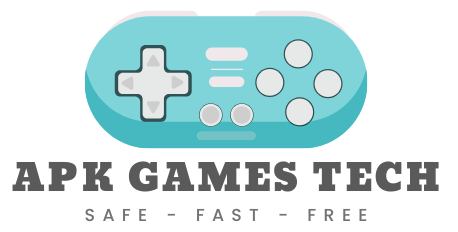Download Aquarium Land MOD Unlimited
*Aquarium Land* is a casual idle tycoon game developed by Turquoise Game. The game’s central concept involves the management and expansion of an aquatic park. Players engage in a core gameplay loop that consists of collecting various sea creatures, stocking them in tanks for visitors, and using the earned income to unlock new exhibits and marine life. This process allows players to progressively grow their humble aquarium into a large marine empire.
In-Game Screenshots
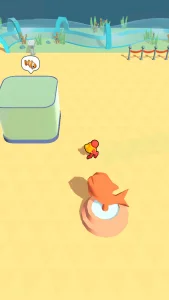
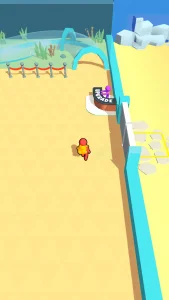
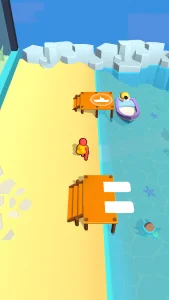
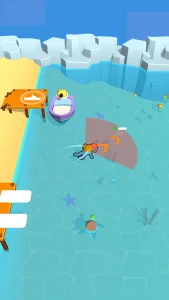
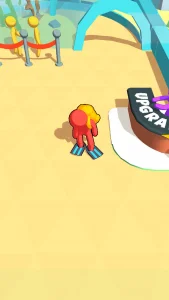
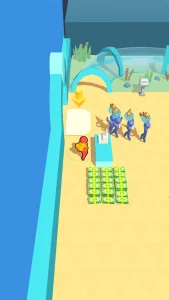
About Aquarium Land
An Analytical Overview of Aquarium Land
Aquarium Land presents a unique case study within the mobile gaming ecosystem, existing as a casual idle tycoon simulation centered on aquatic exhibit management. The title's core identity is bifurcated, offering fundamentally different experiences depending on the platform. The mobile iteration, officially named Aquarium Land — Fishbowl World, is a free-to-play application available for Android and iOS. This version is characterized by an accessible gameplay loop that is heavily integrated with an assertive monetization strategy. In contrast, the console and PC releases are premium, single-purchase games that offer an altered feature set. Understanding these distinctions is paramount for any user considering the Android Application Package (APK).Development, Publishing, and Platform Availability
The game's complex market presence is a direct consequence of its strategic development and a multi-publisher distribution model. Several studios shaped the product, tailoring it for distinct market segments and business frameworks.From Turquoise Game Prototype to Homa Games' Hybridcasual Hit
The game originated from a prototype developed by Turquoise Game, a Turkish mobile game studio. This initial concept showcased a compelling core mechanic of collecting sea creatures, which attracted the publisher Homa Games. Homa Games specializes in the "Hybridcasual" market, a segment that merges simple, hypercasual gameplay with deeper, more robust monetization systems. The partnership between Turquoise Game and Homa Games was transformative; Homa re-engineered the game's economy and design to maximize revenue. This process involved extensive A/B testing of economic models and redesigning features to create monetization sinks. A key example was the introduction of an automated worker system, which enhanced player retention while also becoming a primary expenditure for the game's premium currency.Expansion to Console and PC Platforms
Following its success on mobile, Aquarium Land was ported to PC, PlayStation 4, Xbox, and Nintendo Switch. This expansion was managed by different publishers, namely QubicGames and Gamersky Games. This transition also signaled a fundamental shift in the business model. The console and PC versions adopted a premium, one-time purchase structure, which facilitated the removal of intrusive advertisements and subscriptions. This model also allowed for the inclusion of features tailored to a traditional gaming audience, such as local multiplayer functionality, a feature entirely absent from the mobile release.Chronology of Platform Releases
The game's launch was staggered across several years, beginning with its mobile debut. The Android version, Aquarium Land - Fishbowl World, was first released on February 22, 2022. The iOS version followed shortly after on March 8, 2022. The expansion to consoles occurred later, with the PlayStation 4 and Xbox versions launching in North America on October 6, 2023. The final major platform release was for PC via Steam, which occurred on May 20, 2024. This release strategy illustrates the game's evolution from a mobile-first product into a multi-platform franchise.Deconstruction of the Core Gameplay Loop
At its foundation, Aquarium Land is constructed around a simple, repetitive, yet often compelling gameplay cycle. This loop is characteristic of the idle and tycoon genres, designed for easy learning and a constant sense of progression. On mobile platforms, however, the structure of this cycle is intrinsically linked to the game's monetization framework.The Fundamental Cycle: Catch, Stock, Earn, and Expand
The player's journey begins with a stickman character situated next to a beach abundant with marine life. The entire game revolves around a four-stage process. First, the player engages in the "Catch" phase by diving into the water to collect fish. This is accomplished by moving the character to cast a visibility cone over a target creature until a meter fills, automatically adding it to the player's inventory. Second, the "Stock" phase requires the player to return to their aquarium and deposit the collected animals into their designated tanks. Third, the "Earn" phase is largely passive; visitors automatically arrive, observe the stocked exhibits, and generate income. Finally, the "Expand" phase uses this income as the primary resource for progression. Players use funds to unlock new fish tanks, which in turn allows them to catch new species. Completing all tanks in an area allows the purchase of a new, geographically distinct aquarium, thus restarting the entire loop.Progression, Pacing, and Monetization
The game's progression is linear, structured around the escalating costs of unlocking new tanks and aquarium areas. While early progress is swift, the late game demands significant repetition to afford the most expensive upgrades. This deliberate pacing shifts the gameplay experience from active to idle. As earning times increase, the game encourages a more passive approach, a transition further supported by systems like automated workers. This progression model serves as a calibrated vehicle for monetization. The increasing grind creates friction points, making paid solutions such as temporary boosts, permanent upgrades, or automated helpers more appealing to the player. The gameplay loop is thus structured not only for entertainment but to present problems for which the in-game store offers solutions.Advanced Gameplay Systems and Features
Beyond the primary catch-and-sell mechanic, Aquarium Land incorporates several secondary systems. These features add variety, provide long-term objectives, and create additional avenues for monetization on mobile.- Automation via Workers: To mitigate the repetitive nature of the core gameplay, players can hire automated workers. These NPCs handle the tasks of catching fish and stocking tanks, effectively transforming the game into a more traditional idle experience. The worker system is a central component of the premium economy, with gems being used to unlock, boost, and upgrade them.
- Character Upgrades: Players can spend premium currency to acquire permanent upgrades for their avatar. These enhancements include increased carrying capacity, allowing more fish to be collected per trip, and boosted movement speed for catching more evasive animals.
- Customization and Companions: The game offers visual personalization through over 20 different cosmetic skins for the player character. A pet system also allows players to be accompanied by companions like a puppy or parrot, which provide tangible gameplay bonuses such as increased catching speed or cash collection rates. On console and PC, these pets are often sold as paid DLC packs.
- Vehicles and Exploration: To travel between different fishing zones, players can unlock vehicles such as a motorboat and a jet ski. On mobile, using a jet ski may provide a temporary boost, often acquired by watching a rewarded video ad.
- Collectibles and Side Missions: The game includes side objectives to add depth. Players can find fragments of maritime artifacts to assemble special ships, rewarding them with premium currency. Certain areas feature stealth missions where players must sneak past "sentry sharks" to collect rare bonus fish. Each world also contains legendary creatures, which are key objectives for attracting more visitors.
Comparative Analysis: Mobile vs. Console and PC Editions
A critical understanding for any potential player is that Aquarium Land is not a single, unified product. The experience on mobile (Android/iOS) differs dramatically from the versions available on PC and consoles (Steam, PlayStation, Xbox, Nintendo Switch). These differences encompass core features, business models, and overall design philosophy.The Defining Distinction: Multiplayer Functionality
The most significant divergence is the presence of multiplayer. The PC, PlayStation, Xbox, and Nintendo Switch versions all feature a two-player local cooperative mode. This mode allows two players to manage the aquarium together via a shared or split-screen setup, transforming the game from a solitary activity into a social experience. In direct contrast, the Android and iOS mobile versions are exclusively single-player titles, lacking any form of cooperative or multiplayer functionality. This is a crucial point, as promotional materials showcasing the co-op mode could create misleading expectations for users downloading the mobile APK.Business Models and Content Packaging
The economic structures of the two versions are diametrically opposed. The mobile game operates on a free-to-play model, monetized through frequent advertisements, in-app purchases for currency, and a weekly VIP subscription. The console and PC versions are premium titles, requiring a one-time upfront purchase. This model eliminates disruptive ads and subscriptions, with additional monetization limited to optional cosmetic DLC. Consoles also offer bundled "Gold" and "Complete" editions that package the base game with DLC at a discounted price.Controls and User Interface
Control schemes are tailored to their respective platforms. The mobile versions utilize intuitive swipe-to-move and tap-based controls. Conversely, the console and PC versions feature full controller support, which is the recommended input method. The game is also verified for the Steam Deck, retaining its controller-based input on the handheld device.The "Hybridcasual" Monetization Engine on Mobile
The monetization strategy of the Aquarium Land mobile application is a core pillar of its design. The collaboration between Turquoise Game and Homa Games offers a transparent look into the data-driven methods used to maximize revenue in the Hybridcasual market.Advertisement, In-App Purchases, and Subscriptions
The mobile experience is defined by a high frequency of advertisements, with user reports indicating unskippable interstitial ads appearing as often as every 15 to 30 seconds. This is supplemented by banner ads and optional rewarded videos. For players willing to spend, the game offers a "Remove Ads" IAP, starter packs, and a premium currency ("Gems") used to bypass gameplay friction. The most expensive option is a "Weekly VIP" subscription, priced around $5.99 per week, which provides a package of benefits including daily gems, an exclusive skin, and ad removal. This multi-layered strategy is the result of methodical optimization by the publisher, where features like the worker system were designed specifically to drive premium currency spending, and extensive A/B testing was performed to increase the lifetime value derived from advertising.Technical Profile and APK Installation Considerations
For users seeking to install Aquarium Land on an Android device, understanding the technical specifications and installation process is vital for a secure experience.System Requirements and File Information
The game requires a minimum of Android 5.1 for operation. On iOS, it requires iOS 13.0 or later. The Android APK file size is substantial, frequently fluctuating around 200 MB, which is a key consideration for devices with limited storage. The game receives regular updates that address bugs and add content. The application's assets appear to be bundled within the main APK file, with no evidence suggesting the use of separate OBB data files.Installation and Potential Issues
The safest and most recommended method for installation is via the official Google Play Store. This ensures the application is verified by Google Play Protect and receives seamless updates. While third-party sources offer direct APK downloads, users risk encountering security warnings. Reports indicate that installing from unofficial sources can trigger a Google Play Protect notification that blocks the app from launching due to security concerns. Additionally, the game is known to have significant bugs, most notably a widely reported issue on Level 36 (Aquarium 5) where a physical barrier can halt all player progression, making it impossible to advance. Staying on the official version that receives timely patches is the most prudent course of action to mitigate such game-breaking issues.A Strategic Guide to Aquarium Land Gameplay
Aquarium Land presents a casual idle tycoon experience centered on aquatic exhibit management. The player assumes the role of an entrepreneur tasked with transforming a modest beachside operation into a sprawling marine empire. Success in this endeavor requires a systematic understanding of the game’s core loop, progression systems, and advanced mechanics. This guide deconstructs these gameplay elements to provide a comprehensive operational overview for aspiring aquarium managers.
The Fundamental Gameplay Loop: A Four-Stage Cycle
The entire game structure revolves around a repetitive yet compelling four-stage process. This core loop forms the basis of all player activity and progression. Mastery of this cycle is fundamental to efficient resource generation and expansion. The player’s actions directly influence the aquarium’s growth through this clear, sequential framework.
Catching Marine Life
The primary player activity involves the collection of fish and other sea creatures. The player character navigates aquatic environments to locate target animals. The collection mechanic requires the player to cast a visibility cone over a creature by moving their avatar into proximity. This action initiates a meter that fills over several seconds, after which the creature is automatically added to the player’s inventory. This interaction is managed through simple swipe gestures, ensuring high accessibility. The player character possesses a limited carrying capacity, which necessitates strategic return trips to the aquarium.
Stocking Aquatic Exhibits
Once the player’s inventory reaches its maximum capacity, the character must return to the aquarium facility. The player then deposits the collected marine life into designated tanks. Each distinct species of animal requires a specific tank, which must be unlocked sequentially. This system creates a clear path for progression, as players must systematically populate their existing exhibits before they can diversify their collection with new species from more advanced zones.
Generating Passive Income
With aquatic creatures stocked in their respective tanks, visitors automatically begin to patronize the aquarium. These visitors observe the exhibits and generate income for the player. This phase of the gameplay loop is largely passive, as revenue accumulates without direct player interaction. The variety and rarity of the creatures on display, particularly legendary creatures, serve to attract a greater number of visitors, thereby increasing the rate of income generation and fueling further expansion.
Expansion and Progression
The money earned from visitors constitutes the primary resource for all progression within the game. Players utilize these funds to unlock new fish tanks, which in turn grants them the ability to catch new species. After a player unlocks all the tanks within a specific geographical area, they can purchase access to an entirely new aquarium zone, such as an arctic or tropical region. This action introduces a new set of creatures to collect and exhibits to build, effectively restarting the core gameplay loop on a larger scale with exponentially increasing costs.
Strategic Progression and Resource Management
The progression in Aquarium Land follows a linear trajectory defined by its core loop. The pacing evolves significantly as the player advances, shifting the gameplay experience from an active management simulation to a passive idle game. Strategic investment in upgrades is critical for mitigating the increasing demands of the late game.
Pacing and the Idle Transition
In the early stages, player progress is rapid and requires constant engagement with the catch-and-stock cycle. As the game advances, the cost to unlock new tanks and zones increases exponentially. This design deliberately slows the pace of progression, creating a late-game phase that necessitates a significant amount of repetitive collection. To overcome this, the game encourages a more passive, idle approach where players rely on automated systems and offline income generation to accumulate the vast sums of money required for the most expensive unlocks.
Character and Efficiency Upgrades
Players can invest resources into permanent upgrades for their character to enhance operational efficiency. The game’s premium currency, gems, is the primary resource used for these enhancements. Key upgrades include:
- Carrying Capacity: Increasing the player avatar’s inventory size allows for more creatures to be collected per trip, reducing the frequency of returns to the aquarium and improving overall efficiency.
- Movement Speed: Boosting the character’s movement speed makes navigation of the aquatic zones faster and facilitates the capture of more evasive sea creatures.
These upgrades directly address the friction created by the game’s escalating grind, making them valuable long-term investments.
Advanced Gameplay Systems and Content
Beyond the primary loop, Aquarium Land incorporates several secondary systems that add variety and provide alternative objectives. These features introduce automation, exploration, and collection-based challenges that deepen the gameplay experience.
Automation through the Worker System
To alleviate the repetitive nature of the core gameplay, players can hire non-player character (NPC) workers. These workers automate the process of catching fish and stocking tanks, effectively transforming the active gameplay into a more traditional idle experience. The worker system is a central economic feature, as players use premium currency to unlock additional workers, provide them with temporary performance boosts, and purchase permanent upgrades to their collection efficiency.
Exploration with Vehicles
Travel between different fishing zones and newly unlocked aquarium locations is facilitated by vehicles. Players can unlock and operate a motorboat and a jet ski. These vehicles expand the explorable map and provide access to new areas teeming with undiscovered species. On certain game versions, utilizing a vehicle like the jet ski can also grant a temporary boost, increasing the player’s movement speed and doubling their carrying capacity for a limited duration.
Collectible Missions and Rare Creatures
The game world contains several side missions and collectible objectives to provide players with long-term goals. Players can discover fragments of maritime artifacts scattered throughout the ocean; collecting a full set rewards the player with premium currency. Certain zones feature “sentry sharks” that patrol an area, requiring players to complete simple stealth missions to sneak past them and collect rare “bonus fish.” Each aquatic world also contains legendary creatures, which are larger and more impressive animals that serve as key objectives for completing an area and maximizing visitor attraction.
Game Modes and Control Dynamics
A critical aspect of the Aquarium Land experience is the significant difference in features between its various platform releases. These differences fundamentally alter the gameplay dynamic, particularly regarding multiplayer functionality.
Single-Player vs. Cooperative Modes
The mobile versions of the game for Android and iOS offer an exclusively single-player experience. All gameplay activities, from collection to management, are performed by a solitary player. In stark contrast, the console and PC versions of Aquarium Land include a two-player local cooperative mode. This mode allows two players to manage the aquarium together on a shared screen, diving and catching fish simultaneously. The cooperative feature transforms the game from an individual idle task into a shared, social activity, fundamentally changing the strategic approach to management and collection.
Platform-Specific Control Schemes
The game’s control system is tailored to its native platform. Mobile versions utilize intuitive swipe-to-move and tap-based controls suitable for touchscreen devices. The console and PC editions feature full controller support, which provides more precise character movement and interaction. This ensures the gameplay feels responsive and natural regardless of the input method.
